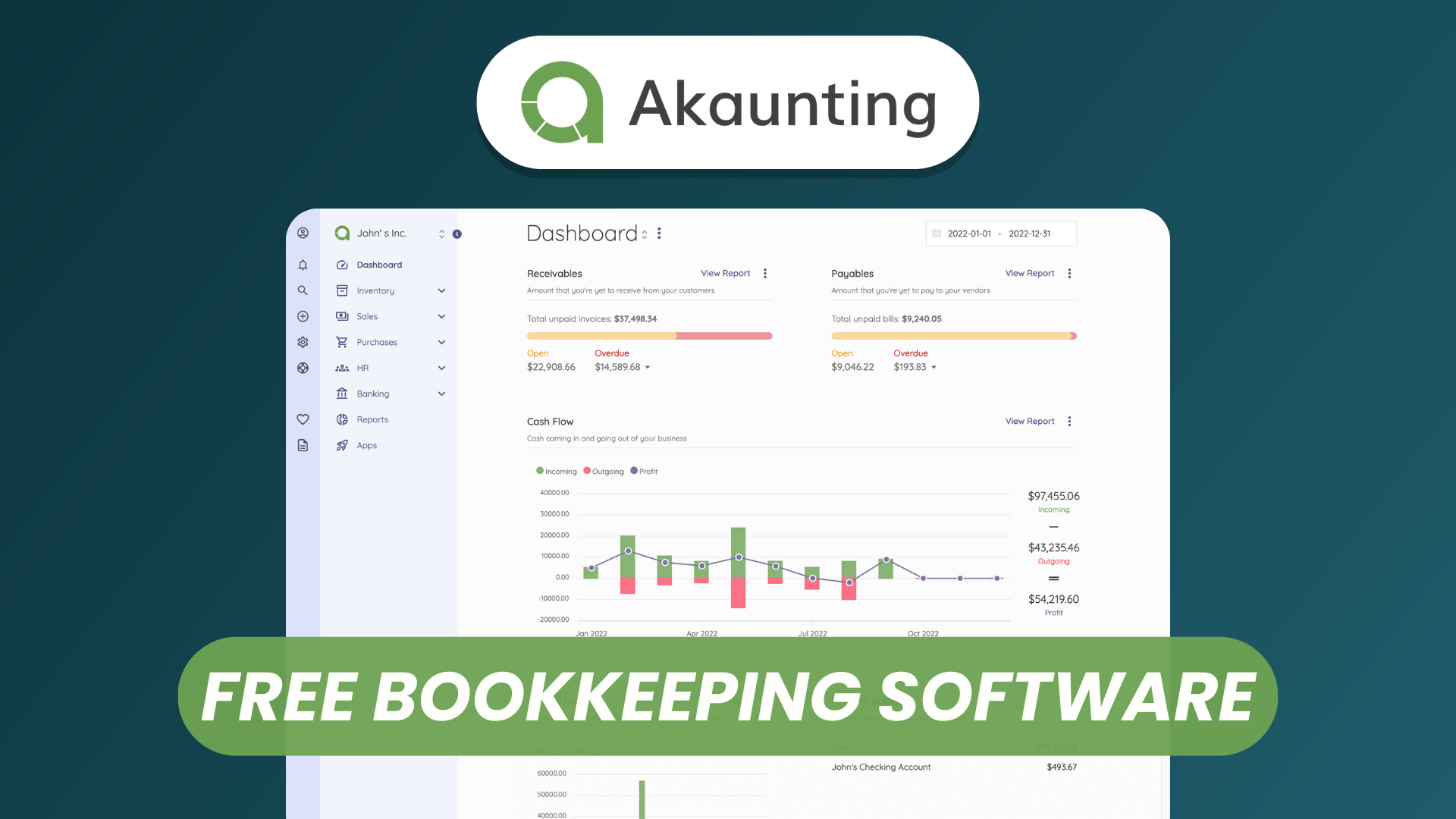Akaunting: Free Open Source Accounting Platform

Managing finances is a core necessity for businesses of all sizes. But finding a solution that’s both affordable and transparent—without compromising on features or control—can be tough.
That’s where Akaunting comes in: a modern, web-based accounting platform that’s free, open-source, and aimed squarely at freelancers, startups, and small businesses.
On paper, it offers an ideal solution: self-hostable, privacy-focused, and packed with the essentials. However, as you go deeper, you’ll find a pricing structure and technical limitations that may feel a bit at odds with open-source principles—particularly for teams or businesses looking to grow.
Watch our Akaunting platform overview video
Onboarding & Company Setup
Setting up Akaunting is straightforward and intuitive. Once installed or signed up, users are guided through a clean onboarding process to define company details like name, fiscal year, timezone, and base currency.
One of Akaunting’s strengths is that it supports multiple companies, even on lower tiers (though limited by plan), making it attractive for entrepreneurs with multiple ventures or clients.
API Key & Paid Plans
Although Akaunting is open source and can be self-hosted, there's a required API key, even for on-premise installations. This key is used to communicates with Akaunting’s servers to validate your plan tier and feature access.
This requirement, even for self-hosted users, may raise eyebrows—especially in the open-source world, where full autonomy is often expected. Essentially, some feature access is gated based on the API key's associated license, which can feel restrictive for a platform promoting openness and self-sovereignty.
The on-premise pricing plans reflect this structure:
| Plan | Companies | Users | Invoices | Support | Price |
|---|---|---|---|---|---|
| Standard | 1 | 1 User + 1 Accountant | 1,000 | Community | Free |
| Premium | 10 | 10 | 10,000 | Ticket | $72/year |
| Elite | 30 | 30 | 30,000 | Ticket | $168/year |
| Ultimate | Unlimited | Unlimited | Unlimited | Ticket | $684/year |
While the free tier is functional, many will quickly outgrow it due to its strict limitations on users and invoices.
Users & Accountants
A significant limitation of Akaunting’s free offering is that it supports only one user and one accountant. For freelancers or solopreneurs, this may be enough. But for startups or small teams, this restriction means that collaboration requires a paid plan, even if you're self-hosting.
This constraint can be frustrating for those expecting open-source software to offer broader control without artificial user caps.
Estimates, Invoices, & Sales Orders
Despite the limitations elsewhere, Akaunting shines in its core functionality. Users can easily create estimates, invoices, and sales orders. The interface is clean, responsive, and the flow from quote to payment is efficient.
Features like multi-currency support, tax rules, and client portals are included and function well. Recurring invoices and more advanced workflows are available, but often locked behind additional paid apps.
Banking & Online Payments
Akaunting supports manual bank account entry and bank statement imports to help reconcile transactions. Integrations with payment gateways like Stripe and PayPal are also available, making it easy for clients to pay online.
However, features like live bank feeds or automated reconciliation are part of paid modules, not included in the free version. While understandable from a business perspective, it’s worth noting that these are often considered core functionality in similar self-hosted platforms.
Dashboard & Reports
The dashboard gives a high-level overview of the business's financial status, including revenue, profit, overdue invoices, and expenses. Users also have access to a decent variety of financial reports: profit & loss, income statements, balance sheets, and tax summaries.
For many small businesses, the reporting capabilities in the free tier will be sufficient. Still, some specialized reports or export features may require upgrading.
Conclusion
Akaunting offers a compelling entry point for businesses seeking free, open-source accounting software. Its clean UI, solid base features, and ease of self-hosting make it a viable alternative to commercial SaaS tools.
That said, Akaunting walks a fine line between open-source accessibility and monetization. The required API key for feature validation, strict user limits, and many paid-only extensions can feel at odds with the expectations of open-source users.
If you're a freelancer or solo business owner, the free version can serve you well. But if you’re part of a team—or simply want the freedom to use all features without artificial limits—you’ll need to consider a paid plan. Akaunting is still a strong contender, but it’s not entirely the “free as in freedom” accounting platform some might expect.

